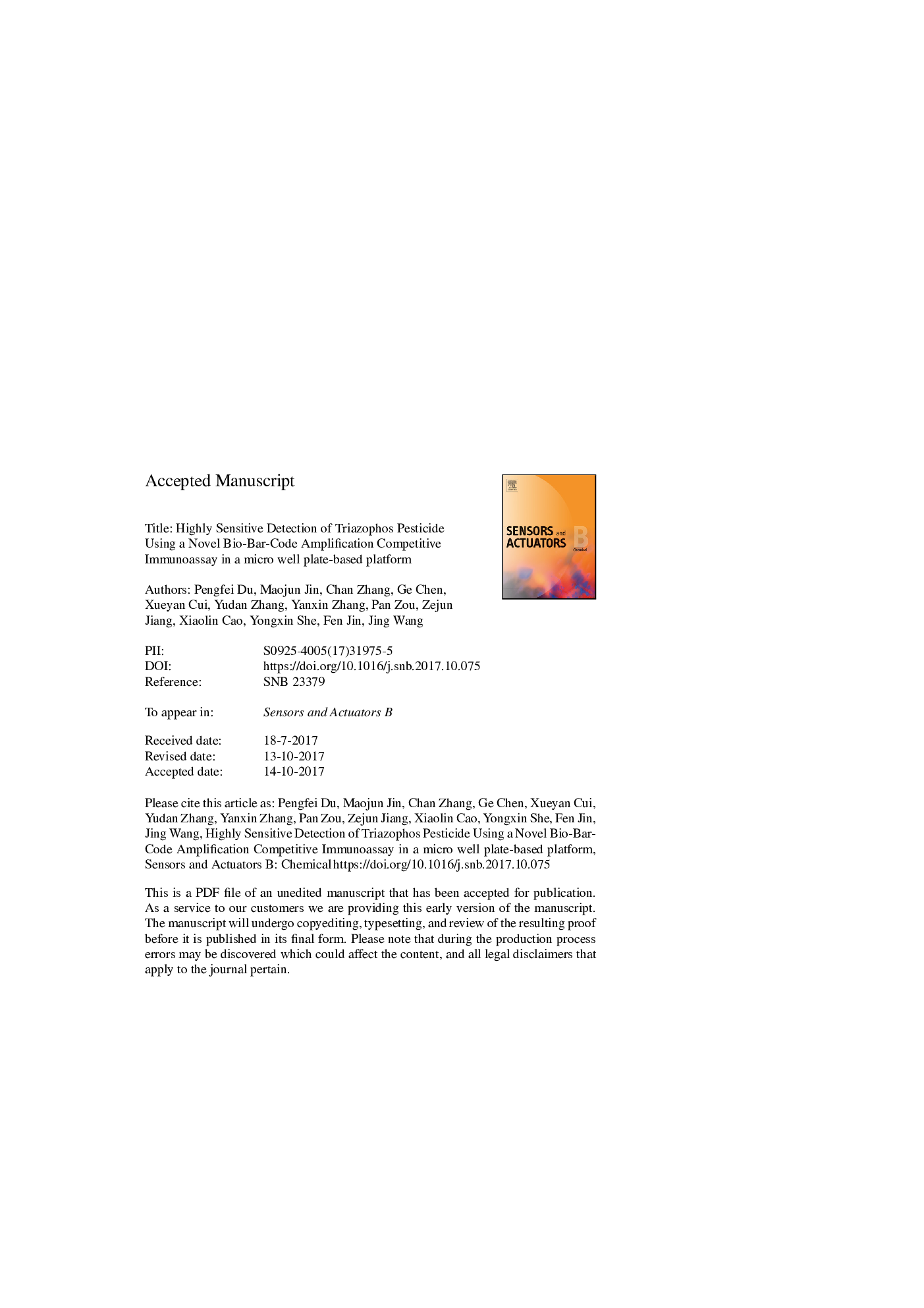| Article ID | Journal | Published Year | Pages | File Type |
|---|---|---|---|---|
| 7141552 | Sensors and Actuators B: Chemical | 2018 | 34 Pages |
Abstract
This study reports a novel bio-bar-code amplification competitive immunoassay for the detection of pesticide residue combined with a micro well plate. The sensing competitive immunoassay was made up of two types of particles: (1) the gold nanoparticles (AuNPs) with recognition elements (monoclonal antibody: McAb) and hundreds of thiolated single-strand oligonucleotide bar-codes; and (2) the magnetic microparticle (MMPs) with competition elements (hapten-OVA) for the target pesticide. Target pesticide and pesticide hapten competed with McAb labeled on the surface of AuNPs. The bar-code strands were released by dithiothreitol. Then a simple method based on micro well plate was used for the quantification of the bar-code strands. The bar-code strands with the half-complementary biotinylated DNA and half-complementary DNA-modified gold nanoparticles probe were immobilized onto the surface of a streptavidin-coated micro well plate, and the signal was amplified by silver enhancement. Triazophos (TAP), as a pesticide model, was detected by the proposed immunoassay. The linear range was from 2.5 Ã 10â2 to 40.0 ng mLâ1, and LOD of the immunoassay was 1.96 Ã 10â2 ng mLâ1. The correlation was further studied between this method and GC-MS analysis. Therefore, this method provided a promising approach for rapid detection and screening of pesticide residue.
Related Topics
Physical Sciences and Engineering
Chemistry
Analytical Chemistry
Authors
Pengfei Du, Maojun Jin, Chan Zhang, Ge Chen, Xueyan Cui, Yudan Zhang, Yanxin Zhang, Pan Zou, Zejun Jiang, Xiaolin Cao, Yongxin She, Fen Jin, Jing Wang,
